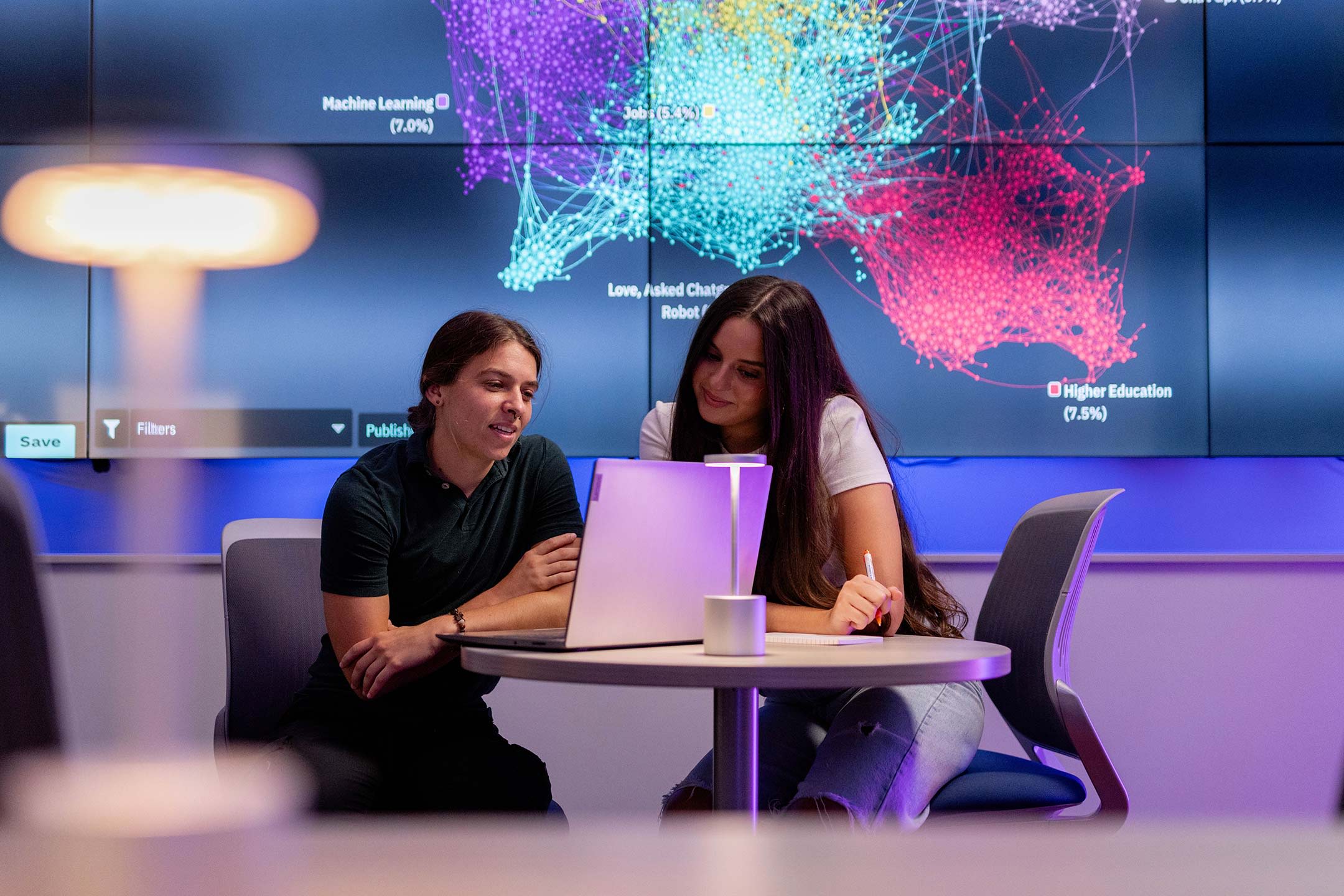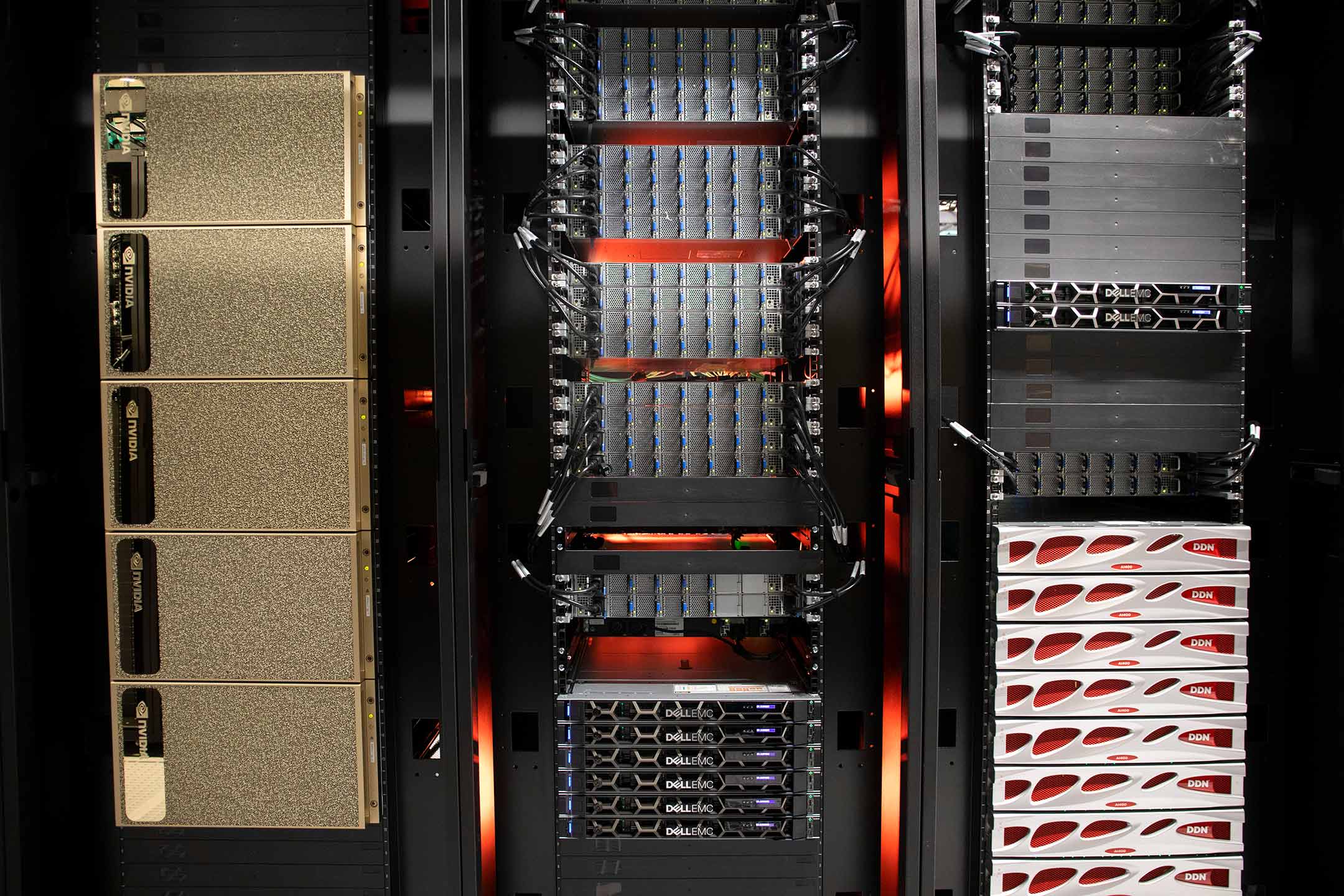The making of an AI powerhouse:
Pursuing academic and research excellence

Artificial intelligence is ubiquitous. From entertainment to utilitarian applications, the use of AI is on the rise. And its impact on the workforce is undeniable.
The University of Florida has embraced this emerging and rapidly evolving technology. In 2020, UF launched a university-wide effort to integrate AI throughout the curriculum, providing students and graduates with the tools to navigate the demands of an AI-driven economy. The university also established a network of AI-savvy faculty and researchers. But UF’s journey to become an AI university started well before 2020.
To learn more about UF’s artificial intelligence initiative, visit the university's official AI website.
Established Investment in AI
In fact, the University of Florida began investing in AI in 2013.
“There is a perception out there that [AI] is just about fast hardware, because that’s what everybody talks about,” said Erik Deumens, director of Research Computing in UF Information Technology. Deumens notes that while data centers and the associated hardware are essential components of AI, so is having people educated in their application. This is why UF established a high-performance computing center in 2013. At the time, the center had three employees; based on demand, it has now grown to 32.
In 2017, UF purchased additional technology to support AI, according to Elias G. Eldayrie, UF vice president and chief information officer. In 2020, the university and NVIDIA announced a pivotal, public-private partnership that boosted the capabilities of UF’s supercomputer, HiPerGator. This partnership was bolstered by a joint $50 million gift: $25 million from UF alumnus and NVIDIA co-founder Chris Malachowsky and $25 million in hardware, software, training and services from NVIDIA. Fast forward to 2025, and UF has begun assembly of a more advanced version of HiPerGator, HiPerGator 4th Gen, which includes technology that’s not even on the market yet.
"HiPerGator is essential to UF's multidisciplinary initiatives and advancements in academic and research achievements," said Eldayrie. "This fourth-generation upgrade of HiPerGator will elevate UF's AI research, accelerate the integration of AI across the curriculum, and solidify UF's status as the AI university."
AI Across the Curriculum
Following the partnership with NVIDIA, UF embarked on a mission to build an AI university and become the first institution to adopt courses across all disciplines.
“AI is turning out to be an enabling technology for every single discipline and department on campus,” said Joseph Glover, UF provost and the architect of the “AI Across the Curriculum” approach. “We said any student at the University of Florida who wants to put in the time and effort can learn AI and graduate either AI literate, AI competent, or as an AI expert.”
Since the inception of this initiative, UF has hired more than 100 AI-focused faculty members to work across the different colleges and started offering professional development to existing faculty to assist them with incorporating AI into their classrooms. These efforts have resulted in more than 300 AI-focused faculty, which has allowed the university to offer AI courses in all 16 colleges. As of now, there are about 12,000 students annually enrolled in AI courses. All undergraduate UF students can also earn a university-wide AI certificate, which allows them to understand the fundamentals of AI, its applications to real world problems in various disciplines, and the ethical and professional responsibilities of these technologies.
In addition to coursework and the university-wide certificate, UF connects students with faculty members to mentor them through research projects via the AI Scholars program. A benefit of this program is that enrolled students will have published, or be on track to publish, their own AI research. The UF Career Connections Center also offers several AI job search resources for mock interviews and creating resumes.
But UF is not only committed to the success of its college students. Florida is one of the first states to adopt a K-12 AI program, and faculty from UF’s Herbert Wertheim College of Engineering and its College of Education helped the Florida Department of Education design a three-year AI Foundations program for its Career and Technical Education (CTE) programs. For working professionals, UF’s Office of Professional and Workforce Development offers an array of AI courses ranging from fundamentals to ones that are industry specific. For working professionals, UF’s Office of Professional and Workforce Development offers an array of AI courses ranging from fundamentals to ones that are industry specific.


Creating Partnerships
A crucial piece in establishing an AI-focused academic environment is the development of partnerships with research and academic institutions. Outside of the partnership with NVIDIA, UF collaborates with various institutions to use HiPerGator. UF’s supercomputer can be used by UF faculty and by faculty at other campuses in the Florida State University System and the SEC for teaching and research.
“One of the key things I think is differentiating is that HiPerGator is not only available for faculty across the state, but also for faculty across the world that are working with our [UF] faculty,” Eldayrie said.
Another notable differentiator for UF is the reach and impact granted by HiPerGator. Eldayrie shared that there is a breadth of projects spanning different disciplines, from health to agriculture and social sciences to the humanities.
“When people think about computation and supercomputing, they think STEM,” he said. “But the scope here and the breadth is so much bigger.”
As these partnerships are formed, UF and NVIDIA continually work with these institutions for training and support through the NVIDIA AI Technology Center (NVAITC), which is a joint research center of UF and NVIDIA to help advance AI research and foster partnership between higher education and industry.
“We have the NVIDIA AI Technology Center, and it actually has been very successful,” Deumens said. “There’s one NVIDIA employee who is the lead of that technology center and he works with the UFIT research computing team on a daily basis, working with our faculty.”
Research partnerships are just one part of the equation. UF leaders also make it a point to collaborate with other institutions on AI pedagogy. In February of this year, UF hosted its first AI2 Summit, a conference geared toward higher education administrators and faculty as well as education technology professionals to learn how to better incorporate AI into teaching, research, and business practices. The summit brought together 450 participants from 40 states and six countries.
UF is also hosting other engagement events this year, starting with an AI webinar on May 12 and UF’s AI Days, which for the first time will have a day open to colleagues outside of UF. These are all opportunities UF wants to offer colleagues to share lessons learned from implementing AI across the curriculum.
Looking Ahead
Since 2013, UF has dedicated resources to position themselves as leaders in AI education and research. Now, the institution continues to be on the lookout for emerging technology and trends to stay ahead of the curve.
“We’re moving into a phase where we want to create the future we want to live in,” Eldayrie said.
The HiPerGator upgrade was an investment for the future of the university, but Eldayrie continues to monitor emerging technology. He said, “I want to continue to influence the future as opposed to staying where we are and waiting for the machine to be five years old before we replace it.”
To learn more about UF’s artificial intelligence initiative, visit the university's official AI website.
This custom content is sponsored by the University of Florida and developed by Inside Higher Ed's sponsored content team. The editorial staff of Inside Higher Ed had no role in its creation.



